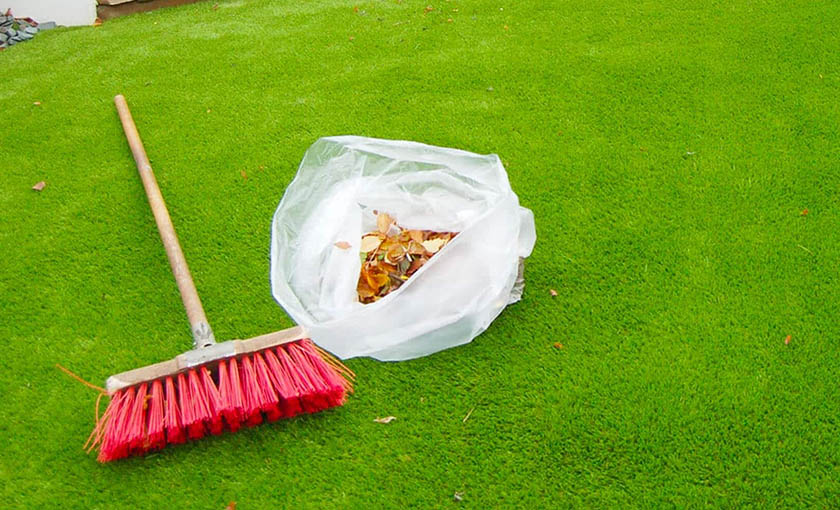Artificial grass has revolutionized how we think about landscaping. Gone are the days of spending countless hours maintaining a natural lawn. Artificial turf offers a lush, green appearance year-round with minimal upkeep, making it an increasingly popular choice for homeowners and businesses alike.
The appeal of artificial grass lies not only in its aesthetic value and low maintenance but also in its versatility and environmental benefits. However, a common hurdle in choosing artificial grass is the perceived high cost of installation. This article aims to dispel that notion by guiding you through the most cost-effective ways to install artificial grass. Whether you’re a DIY enthusiast or considering professional installation, there are numerous strategies to reduce costs without compromising on quality.
Contents
- 1 1. Planning and Measuring for Efficiency
- 2 2. Selecting the Right Artificial Grass
- 3 3. Purchasing Options: Retail, Wholesale, or Direct
- 4 4. DIY vs Professional Installation: A Cost Analysis
- 5 5. Buying in Bulk: Maximizing Savings
- 6 6. Seizing Seasonal Sales and Discounts
- 7 7. Sub-base: The Foundation of Cost Savings
- 8 8. Innovative Installation Methods for Cost Reduction
- 9 9. Long-Term Savings: Maintenance and Care Strategies
- 10
- 11 Conclusion
1. Planning and Measuring for Efficiency
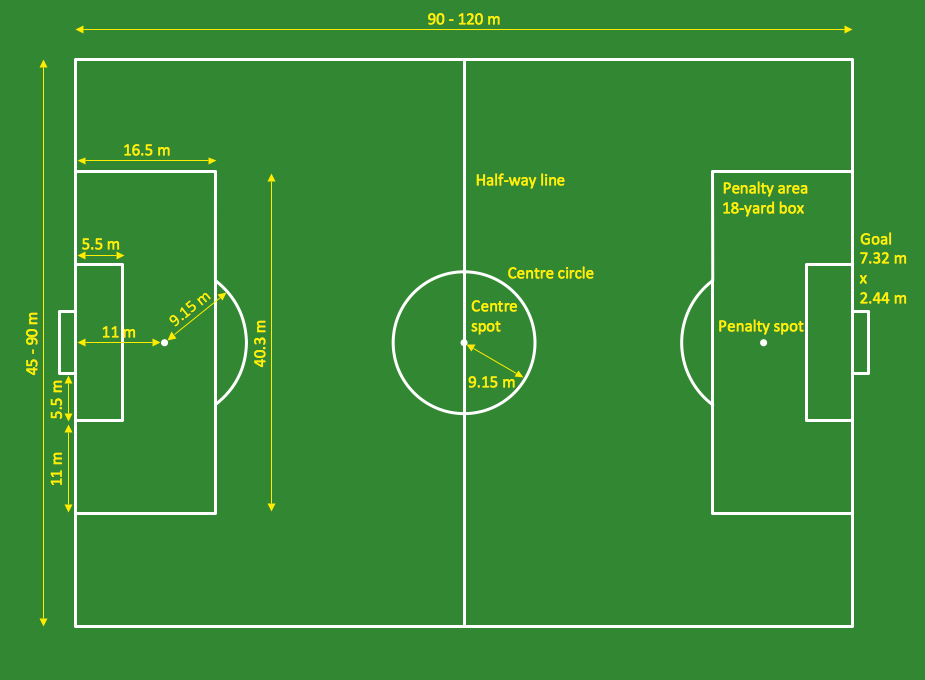
Proper planning and precise measuring are the cornerstones of cost-effective artificial grass installation. Here are key steps to ensure efficiency:
- Outline Your Area: Sketch the layout of your intended installation area.
- Measure Accurately: Use a tape measure to get exact dimensions. For complex shapes, break them into simpler geometrical shapes.
- Calculate Total Area: Sum the areas of all sections to determine the total square footage needed.
- Account for Overlap: Include a small extra allowance (about 5-10%) for cutting and fitting.
2. Selecting the Right Artificial Grass
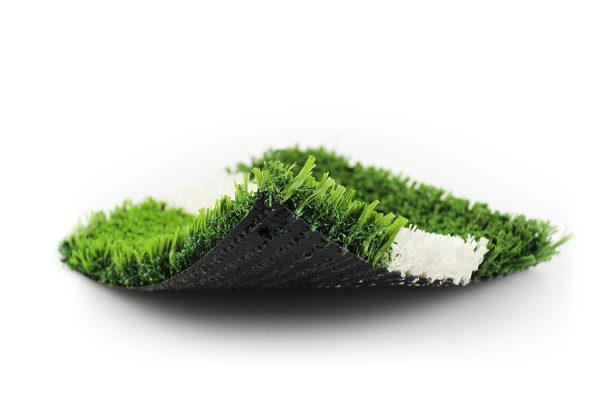
Choosing the right artificial grass is pivotal in balancing cost-effectiveness with quality. While high-end varieties offer advanced features, they come with a higher price tag. On the other hand, budget-friendly options might not deliver the desired aesthetics or durability. Here’s how to strike the right balance:
Key Considerations
- Pile Height and Density: Opt for a medium pile height and density. This provides a natural look and feel without the premium cost of higher-end models.
- UV Resistance: Ensure the turf has good UV resistance to prevent fading, extending the life of your grass.
- Warranty: Look for products with a warranty. This offers peace of mind and guarantees against premature wear and tear.
Second-Hand Turf: A Viable Option
When considering second-hand artificial grass, it’s crucial to thoroughly inspect its condition. Look for signs of wear and tear, and inquire about its history and duration of use. This careful evaluation helps in deciding whether the second-hand turf meets your standards for your project, ensuring you get quality material at a reduced cost.
3. Purchasing Options: Retail, Wholesale, or Direct
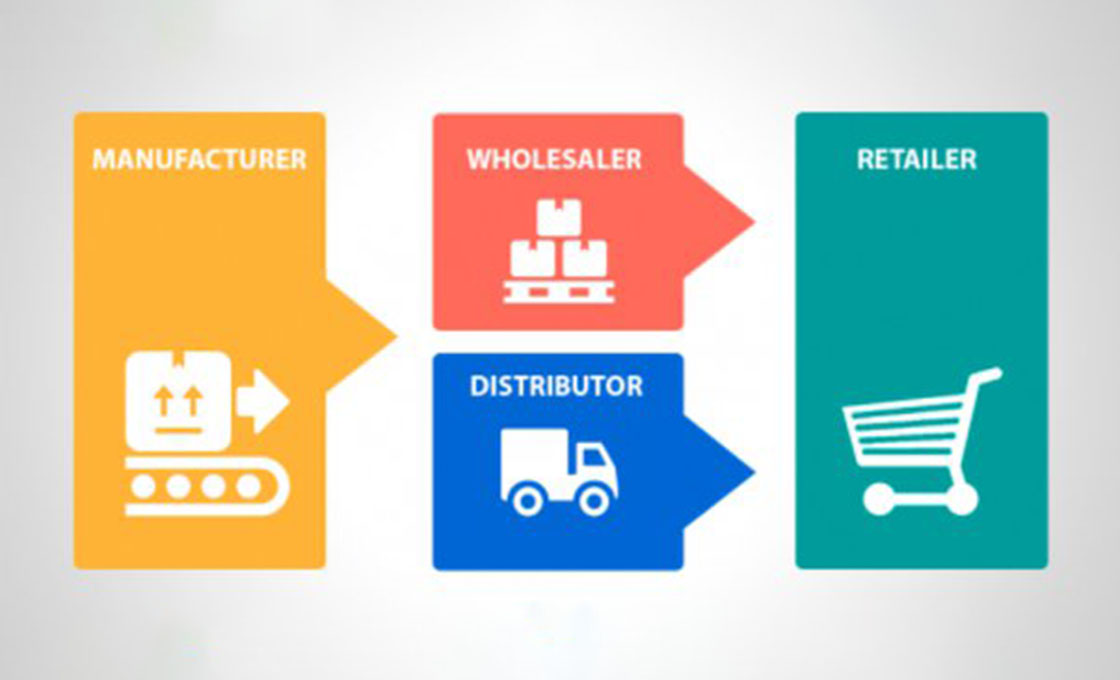
When it comes to buying artificial grass, you have several options: retail, wholesale, or direct from the manufacturer. Each has its own set of benefits and potential cost savings.
Retail Purchases
- Convenience: Retailers often offer ready stock for smaller projects.
- Variety: A wide range of options to choose from.
- Higher Cost: Generally, retail prices are higher due to added overheads.
Wholesale and Group Buying
- Bulk Discounts: Purchasing in bulk can significantly reduce the cost per square foot.
- Ideal for Larger Projects: Best suited for extensive landscaping projects or community purchases.
Direct from Manufacturer
- Cost-Effective: Typically, the most affordable option as it eliminates middlemen.
- Minimum Order Requirements: There might be a minimum purchase requirement.
Comparing Prices
Regardless of the purchasing option, it’s crucial to compare prices from different suppliers. This ensures that you get the best deal available for the quality of turf you desire.
Read More:
- How Much Does Artificial Grass Cost Per Square Meter?
- Your Ultimate Guide to Buying Artificial Grass – Where to Buy and What to Consider
4. DIY vs Professional Installation: A Cost Analysis
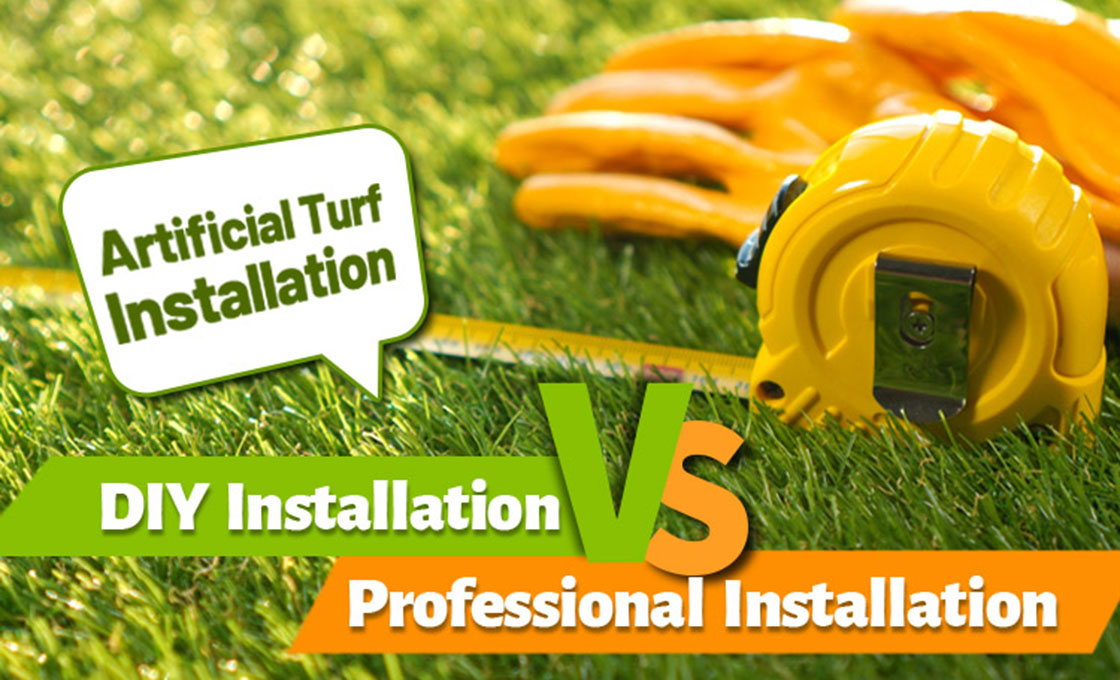
Deciding between a DIY installation and hiring professionals is a significant factor in managing costs. Both options have their advantages and implications on your budget.
DIY Installation
- Cost Savings: The most apparent benefit of DIY installation is the savings on labor costs.
- Learning Curve: It requires time to learn and execute the installation correctly, utilizing guides and tutorials.
- Time Investment: A substantial amount of your time will be dedicated to the installation process.
Professional Installation
- Expertise and Efficiency: Professionals bring expertise, ensuring the installation is done right the first time.
- Higher Initial Cost: The primary drawback is the higher upfront cost for their services.
- Long-Term Value: A professional installation can ensure longevity and durability, potentially saving money in the long run.
Making the Decision
The choice between DIY and professional installation depends on your skills, available time, and budget. While DIY can be more cost-effective upfront, professional installation offers peace of mind and potentially better long-term value.
5. Buying in Bulk: Maximizing Savings
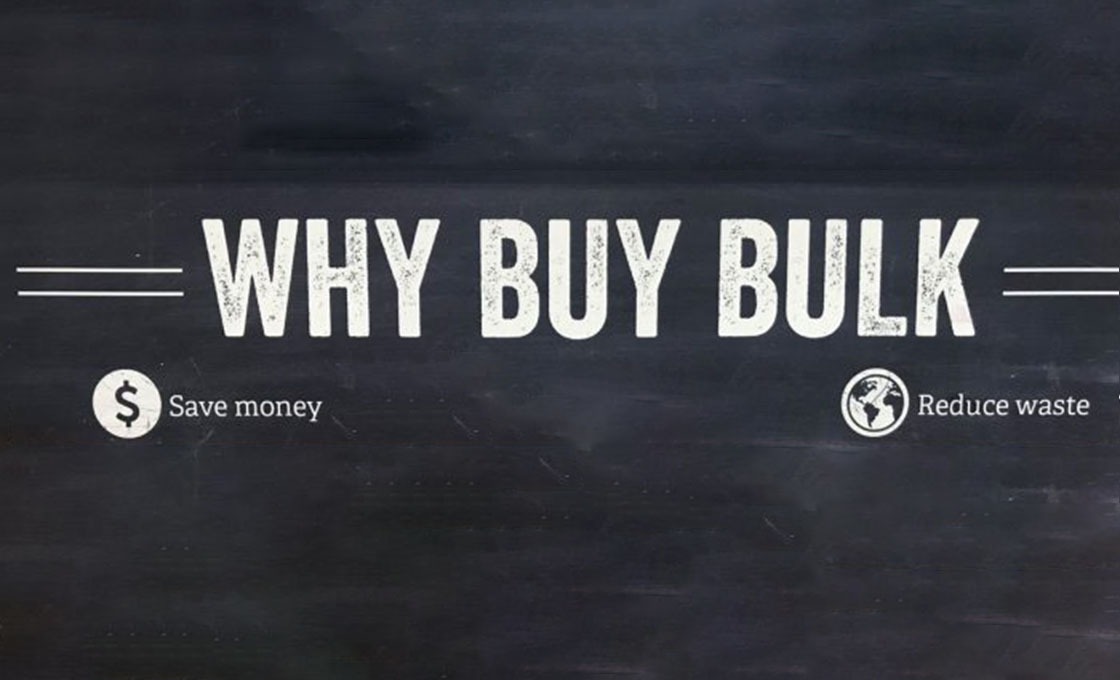
Purchasing artificial grass in bulk is a strategic way to cut costs, particularly for larger projects or community installations.
Advantages of Bulk Purchases
- Reduced Price Per Unit: Bulk purchases often come with a discount, lowering the overall cost per square foot.
- Economies of Scale: The more you buy, the more you save.
Group Buying
- Community Purchases: Consider teaming up with neighbors or local community groups to buy in larger quantities.
- Shared Savings: This approach can lead to significant savings for all participants.
Bulk buying is an excellent strategy for those planning extensive landscaping projects or when multiple parties are interested in transitioning to artificial grass. It’s an opportunity to get a better deal while maintaining high-quality standards.
6. Seizing Seasonal Sales and Discounts

Capitalizing on seasonal sales and discounts can lead to substantial savings when purchasing artificial grass.
Off-Peak Season Discounts
- Timing: Look for discounts during off-peak seasons when demand for landscaping materials is lower.
- Planning Ahead: Purchasing during these times, even if installation is planned for later, can be cost-effective.
Major Shopping Events
- Sales Events: Keep an eye out for major sales events like Black Friday or end-of-season clearances.
- Newsletter Subscriptions: Subscribing to newsletters from suppliers can alert you to upcoming sales and exclusive deals.
Utilizing these opportunities requires timing and a bit of strategic planning but can significantly reduce the overall investment in artificial grass.
7. Sub-base: The Foundation of Cost Savings
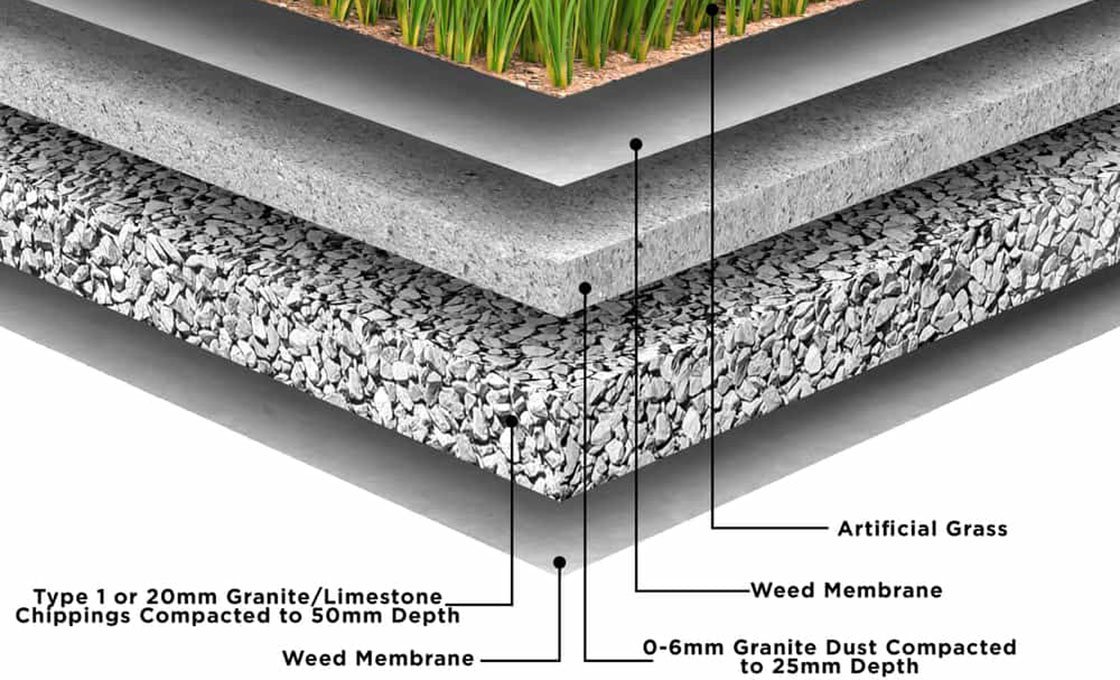
The sub-base is a critical component of artificial grass installation, affecting both the performance and cost.
Importance of a Good Sub-base
- Stability and Drainage: A well-prepared sub-base ensures stability and proper drainage.
- Longevity: It affects the longevity of the artificial grass.
Cost-Effective Sub-base Materials
- Crushed Rock and Decomposed Granite: These materials offer a balance between quality and affordability.
- Recycled Materials: Using recycled materials can also be a budget-friendly and eco-friendly option.
Investing time and effort in preparing a suitable sub-base is essential for a successful and cost-effective artificial grass installation.
8. Innovative Installation Methods for Cost Reduction
Adopting innovative installation methods can significantly reduce the cost of laying artificial grass.
Utilizing Remnants and Efficient Site Layout
- Remnants: Using leftover pieces from larger projects can offer considerable savings.
- Site Layout: Efficiently planning the layout to minimize waste is key.
Cost-effective Seaming Methods and Tool Strategies
- Seaming Methods: Opt for simpler seaming techniques like using nails instead of expensive adhesives.
- Tool Selection: Choose basic hand tools over specialized equipment to cut down on rental or purchase costs.
These innovative approaches can help maintain quality while keeping the installation process within budget.
9. Long-Term Savings: Maintenance and Care Strategies
Proper maintenance of artificial grass is key to extending its lifespan and saving money in the long run. Here are essential maintenance tips:
- Regular Cleaning: Regularly remove debris and rinse the turf to prevent buildup and ensure the grass maintains its aesthetic appeal.
- Brushing: Occasionally brush the grass to keep the blades upright and maintain its natural look.
- Spot Cleaning: Address spills or stains immediately to prevent permanent damage.
- Avoid Heavy Equipment: Prevent damage by avoiding heavy equipment or vehicles on the grass.
By adhering to these maintenance practices, the artificial grass remains in top condition for years, reducing the need for replacement and thereby offering significant long-term cost savings.
Conclusion
Since 1999, Relyir has been a dedicated manufacturer of artificial grass, offering a diverse range of high-quality products directly from our factory. Our prices are exceptionally competitive, typically ranging between 50% to 70% of the retail prices for comparable quality products.
While we do have a minimum order quantity of 100 square meters and do not offer installation services, this approach allows us to focus on providing the best possible product at the most affordable prices. Choose Relyir for a cost-effective, quality solution for your artificial grass needs, straight from the manufacturer.

